Jersey City Self-Driving Vehicle Accident Lawyers
We are a team of highly skilled personal injury attorneys. If you have a bodily injury legal issue in or around Jersey City, New Jersey, we can help. Call us today for a free consultation.
Jersey City Self-Driving Vehicle Accident Lawyers
What many once thought of as a relic of science fiction movies has become a reality — self-driving cars are now on the road. The tech companies that have created these vehicles have promised a safer and more efficient way of traveling, but that’s not always what happens.
A malfunctioning self-driving car that leads to an accident raises a lot of questions, including who exactly is liable. Is it the person in the car, the manufacturer, or someone else?
When self-driving cars don’t work as they should and cause accidents, you need to understand the options and rights available to you. If you’ve been in an accident in New Jersey that a self-driving car caused, you have to turn to Jersey City self-driving vehicle accident lawyers.
Which Are Safer: Driverless or Human-Driven Cars?
On paper, driverless vehicles appear to be safer than human-driven cars. They don’t get distracted, which is a huge issue on the road, with more than 420,000 people injured each year in the U.S. because of a distracted driver.
Self-driving cars also can’t get intoxicated or fatigued, both of which are issues when humans drive cars. Human drivers are additionally more likely to break traffic laws and take risks that could lead to collisions.
Human drivers are more prone to making errors as well. These errors distract drivers and put others on the road at risk. A computer-driven vehicle is able to process road information more rapidly and make better decisions with that knowledge.
Self-driving cars don’t have emotions, either, and they’re not vulnerable to stress, which means they don’t engage in road rage or reckless driving. The sensory technology that self-driving cars have to possess to work correctly is also more efficient than those that humans have.
All of this, however, is only theoretical. The reality of self-driving technology is very different.
LACK OF COMMON SENSE AND REASONING SKILLS
The biggest issue is that self-driving cars don’t have common sense or reasoning skills. When faced with unexpected situations, like a deer darting onto the road or another car swerving, a self-driving vehicle doesn’t know what to do because it hasn’t been programmed for that situation.
If a ball rolls onto a street, humans know to watch for children chasing after it. A computer doesn’t. All of this leads to preventable accidents.
Technology hasn’t yet been able to manufacture common sense into self-driving cars or computers in general. This makes it necessary to code every possible scenario, which is essentially impossible.
Driverless vehicles also can’t anticipate situations like humans can. Instead, they drive from moment to moment.
THEY DON’T “SEE” LIKE HUMANS
Another issue is that self-driving cars don’t see like humans do. Their computer vision systems can be fooled in ways that human eyes can’t. Minor changes to a speed limit sign, for example, have prompted self-driving cars to see 35 mph as 85 mph.
Recently, hackers tricked a driverless car into changing lanes by using brightly colored tape to create a fake lane. A human behind the wheel wouldn’t have been fooled by either one of these situations.
Although those are extreme cases, there are other issues that can stem from a self-driving vehicle not seeing correctly. Some drivers have reported that self-driving cars register shadows as real objects. In one accident that led to a pedestrian death, the car registered the person first as a vehicle and then as a bicycle.
FALSE SENSE OF SECURITY
There are no fully automated and entirely self-driving cars available yet. By advertising them as self-driving, companies encourage people to act more like passive passengers instead of being ready to take over when there’s a problem.
As with other cars, the majority of accidents that occur in self-driving options are a result of driver distraction.
TECHNOLOGICAL IMPERFECTIONS
One of the most worrying aspects of driverless cars is that they’re on the road with technology that doesn’t work well. Active driving assistance systems that combine braking, acceleration, and steering often disengage without any warning. This requires the driver to immediately take control of the car.
If the driver is distracted, issues like this could end in an accident. Autopilot navigational errors can cause crashes, too.
FIRE DANGER
Self-driving cars rely on lithium-ion batteries, which are highly combustible. If these batteries catch fire, they can reach up to 3,632 degrees Fahrenheit. Anyone who tries to douse the fire out with water can cause a hydrogen gas explosion.
If a collision damages a battery, there’s the risk of thermal runaway, which is characterized by an uncontrolled increase in pressure and temperature. That could lead to the release of projectiles and toxic gases.
RISK OF HIGHER RADIATION EXPOSURE
These cars are packed full of technologies ranging from GPS, remote controls, and Bluetooth to Wi-Fi, power accessories, and more. As such, drivers can be exposed to high amounts of electromagnetic field radiation.
Prolonged exposure to electromagnetic field radiation can lead to health issues. These can include headaches, migraines, sleeping issues, and high blood pressure.
FORGETTING DRIVING SKILLS
Drivers who rely on self-driving cars could lose some of their basic driving skills. As a result, they could have slower reaction times when there’s an emergency that requires them to take over.
LACK OF SELF-DRIVING REGULATIONS
There are some regulations in place that govern self-driving vehicles, but many more need to be added to make the roads safer. In the meantime, self-driving car manufacturers have very few guidelines to follow when bringing a car to market.
There are even ways for manufacturers to skip some federal crash safety requirements in cars that were not designed to carry people. This doesn’t address the fact that these cars could share the road with other vehicles that do have human drivers and passengers.
Currently, there are 21 states with laws allowing autonomous vehicles, and many more are researching the laws they need to enact to make that happen. The states that allow full deployment of these vehicles also have insurance laws in place.
CYBER ATTACKS
Another danger that self-driving cars pose is the worry of them being targeted for cyberattacks. In a planned test scenario, hackers attempted to hack into a Jeep and succeeded. They forced it to stop on a highway while traveling at 70 mph.
No Fee Unless
GGL Wins
Who Is Liable for a Self-Driving Vehicle Accident?
Understanding who is at fault for an accident with a self-driving vehicle is essential, but it’s also potentially complicated. Until now, an accident on the road usually involved two vehicles and drivers. In a world where self-driving cars are the majority on the road, that’s no longer the case.
One of the first factors to consider is the degree of autonomy that the car has. There are a few degrees, with 0 being a car that is fully controlled by a driver.
- Level 1 cars offer some degree of assistance, like lane centering and adaptive cruise control.
- Level 2 cars offer partial driver automation, including lane centering and adaptive cruise control. However, drivers still have to keep their hands on the wheel and eyes on the road.
- Level 3 cars provide conditional driver automation. Drivers are able to take their hands off the wheel under specified conditions but must be ready to take over when necessary.
- Level 4 cars don’t require driver intervention as long as the vehicle is operating under very specific conditions, like driving on a particular street. Finally, level 5 cars offer full automation, where humans don’t need to intervene at all. Knowing the level of automation offers the chance for lawyers to understand liability and place it on the right entities.
In some instances, the human driver is liable. This occurs if the automation fails, but the driver should have noticed and had enough time to do something about it. It’s not always straightforward, however, because the driver could claim that the car provided a false sense of security.
The tech company that created the program the car utilizes could also be at fault. If the automation failed because of a program malfunction and a reasonably alert human driver couldn’t have avoided the danger, placing liability on the tech company is usually the right course of action.
For example, suppose that a sensor didn’t notice a pedestrian, and the car failed to stop or alert the driver or did so too late. In that case, the tech company is likely at fault.
Sometimes, the technology is sound but doesn’t operate correctly because of faulty installation. In such instances, the car manufacturer could be liable instead of the tech company.
It’s also possible that the tech functioned correctly and was installed correctly but failed to function properly because it’d been damaged or was not well maintained. The fault could then lie with the owner or maintenance professional.
Because of how complex these cases are, it’s essential to always turn to a self-driving vehicle accident lawyer to represent you. They’ll be able to assess the case and gather the right evidence to help prove your claim.
Keep in mind that tech companies and other people who are invested in self-driving cars have teams of lawyers ready to fight your claim. They have a lot riding on these kinds of cars being safer than human drivers, so they’ll do everything possible to try to disprove your claim.
Having experienced lawyers by your side is essential. Only then can you hope for the best chance of getting the compensation you deserve after being in an accident involving a self-driving vehicle.
Self-Driving Vehicle Accident Statistics
When looking at statistics that compare human drivers to driverless cars, it’s not easy to get a fair and accurate idea of which option is safer. Yes, more than 90% of all crashes occur because of driver error, but the crash rates of self-driving cars can only be evaluated when there’s information on how many non-collisions occur.
From what information is available, self-driving cars are more than twice as likely as traditional vehicles to be in an accident. There are 9.1 crashes involving driverless vehicles per million vehicle miles and 4.2 crashes per million vehicle miles for human-driven cars.
Rear-end collisions are the most common types of accidents that driverless vehicles cause, making up 64.2% of accidents. Side-swipe collisions are second, coming in at 20.8%.
Vehicles with active driving assistance systems experience, on average, problems every eight miles in real-world driving. On roadways, the most common issues that these cars lead to are lane departure or erratic lane position, with 73% of errors involving these issues.
Why Hire GGL?
Being in a car accident of any kind can leave you battling injuries, trauma, and financial problems. The entire process of getting compensation is also difficult, especially in self-driving car accidents, because it’s tough to prove who was truly liable.
If you’ve been in this kind of accident, the best thing you can do is turn to a self-driving vehicle accident lawyer for representation. At Garces, Grabler & LeBrocq, we represent those in New Jersey who’ve suffered injuries or property damage because of a self-driving car. Our team has been offering help since 1991, bringing over 30 years of experience to every case we take on.
Garces, Grabler & LeBrocq is one of the few multilingual law firms in New Jersey. As such, we help to provide support to everyone who needs it, regardless of where they’re from.
One thing that makes us stand out is that we’re tenacious but always compassionate. We’ll be ruthless when dealing with insurance companies but sympathetic with each of our clients because we know how difficult it can be to be in an accident.
When you turn to our team, we are ready to guide you through the complex process of filing a claim against the various parties that can be liable during an accident involving a self-driving car. And because we work on contingency, we don’t get paid if you don’t.
All of our attorneys work exclusively in personal injury law. We’re a no-nonsense firm with one goal in mind: to help our clients get the compensation they deserve to pay medical expenses, repair bills, and other damages.
Because we know that the process of getting compensation can be a lengthy one, we make certain to communicate with our clients. We want to keep you in the loop so that you have less stress in your life.
When you turn to our team, you can always expect respect and a hardworking group of people ready to take your case to trial if that’s what’s necessary to get you the compensation you deserve. We don’t back away from a fight.
Whether you are in the Spanish or English-speaking community of Jersey City, we are here to help. Contact Garces, Grabler & LeBrocq by calling 1-800-923-3456.
No Fee Unless
GGL Wins
We've got you covered.
We are available 24/7/365

OFFICIAL PARTNER OF RUTGERS ATHLETICS
Jersey City Self-Driving Vehicle Accident Lawyers
Address: 3000 John F. Kennedy Blvd. Suite 311 Jersey City, NJ 07306
Phone: (201) 695-1000
Open 24/7 365
Office:
8:30-6:00 Monday
8:30-6:00 Tuesday
8:30-6:00 Wednesday
8:30-6:00 Thursday
8:30-6:00 Friday
Recent GGL Wins
Medical Malpractice
A 30-year-old pregnant woman went into labor. The doctor failed to take proper steps in the baby’s delivery, making the mother wait in the hallway for ten hours while the baby’s heart rate began to drop. The baby was delivered via C-Section; he was blue from lack of oxygen resulting in Cerebral Palsy.
$14 Million
Verdict
Construction Accident
Mediation award resulting from an industrial explosion causing disfiguring burns and severe orthopedic injuries.
$7,8 Million
Verdict
Auto Accident
31-year-old man who was cut off by another car causing his car to flip over. He sustained head injuries, facial injuries, and half of his pinky finger was amputated.
$3 Million
Verdict
No Fee Unless
GGL Wins
Request A Free Consultation
We've got
You covered
We are available 24/7/365

